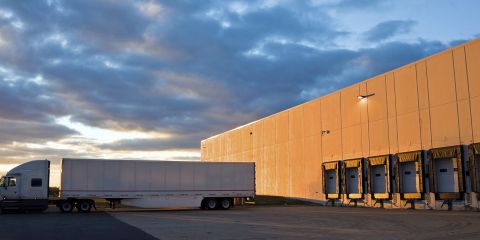
Fulfillment centers are crucial to the smooth operation of a supply chain, as they store products, process orders from customers, custom package the items, and prepare them for immediate dispatch.
For many businesses in Canada, outsourcing logistics to a 3PL provider can be an excellent way to free up time and resources, as a good fulfillment center acts as an extension of your business. The moment an order is received, they get to work on picking, packing, and shipping.
This puts the onus on the fulfillment center to be organized, efficient, and ready to handle large volumes. While it sounds easy in theory, executing it at high speeds and for prolonged periods can lead to accidents and mixups.
Therefore, if you are searching for a fulfillment center to work with, or you are managing one, ensuring these 5 best practices will lead to long-term success.
1. Stay on Top of Changing Regulations
Navigating the evolving landscape of Vancouver logistics is crucial for fulfillment center operations, and they must informed on changing rules related to import-export laws, updates in data privacy norms, or alterations in environmental compliance policies.
Managers at a fulfillment center must possess and build on their understanding of these regulations to prevent operation disruptions and save a business from unnecessary legal complications.
With the advent of AI, drones, and autonomous vehicles, the logistics sector will continue to face additional regulations in years to come. Being ahead of these changes allows businesses to proactively position themselves to adjust to changes while optimizing performance.
2. Minimize Handling
Reducing handling and touch points within a warehouse leads to quicker order fulfillment and higher customer satisfaction levels. Managers must consistently look for areas that are slowing down order fulfillment and look for ways to improve.
If the bottlenecks are related to the employees, incorporating new training material that shows ideal picking and packing methods for your business is a great refresher that can help everyone incorporate a few good habits.
Cross-docking is another effective method that reduces handling time within warehouses. This process involves moving incoming merchandise directly into outbound trucks with minimal storage or handling time leading to reduced operational costs and quick turnovers.
3. Implement a Warehouse Management System
A Warehouse Management System (WMS) is a software application designed to support and optimize a distribution center. It predominantly covers operations like inventory control, order fulfillment, receiving and put-away, picking and packing of orders, and shipping.
By adding all the products within the warehouse into the Warehouse Management System (generally through RFID tags), these systems can act as a database for the entire warehouse. Their features include:
- Real-time inventory tracking and visibility
- Automated picking, packing, and shipping processes
- Advanced reporting and analytics tools
- Order management and processing capabilities
- Returns management
Warehouse Management Systems (WMS) bring data to life and provide warehouses with a powerful tool for their entire operation.
4. Constantly Gather, Track and Analyze Info
With a Warehouse Management System in place, collecting continuous data helps identify patterns and enables proactive decision-making strategies for businesses.
For instance, frequent tracking of popular products can allow companies to adjust inventory levels ahead of time, minimizing stock-outs and lost sales opportunities.
Furthermore, the implementation of technologies such as RFID or IoT-based tracking systems provides comprehensive visibility into warehouse operations. These real-time insights help identify bottlenecks within the system leading to immediate problem-solving and efficiency optimizations across the entire operational chain.
5. Set KPIs
For a holistic view of the performance of a fulfillment center, setting Key Performance Indicators (KPIs) is crucial. KPIs provide quantifiable measures that offer insights into how well an organization aligns with its business objectives.
A set of well-defined KPIs specific to fulfillment centers might encompass – cost per order, inventory turnover rates, and rate of return due to damage. Managers should constantly monitor these factors to identify areas that need improvement and tweak management strategies as necessary.
Keeping the team aligned and working toward KPIs ensures that every aspect of the supply chain is maximizing performance. Meeting well-defined KPIs in the early stages of a business is often a sign that the fulfillment center is on the path toward profitable growth.
The primary goal of any 3PL Fulfillment center is to simplify business logistics processes while optimizing customer satisfaction. Following these best practices - focusing on customer experience, integrating technology, and fostering collaboration - can help achieve this objective.
The CWLA is a community of like-minded warehousing & supporting companies. We can help you generate leads, stay informed with industry news, regulations, & upcoming events. The
CWLA is open to all warehousing, trucking, co-packing, or fulfillment providers. Please contact us if you have any questions.
